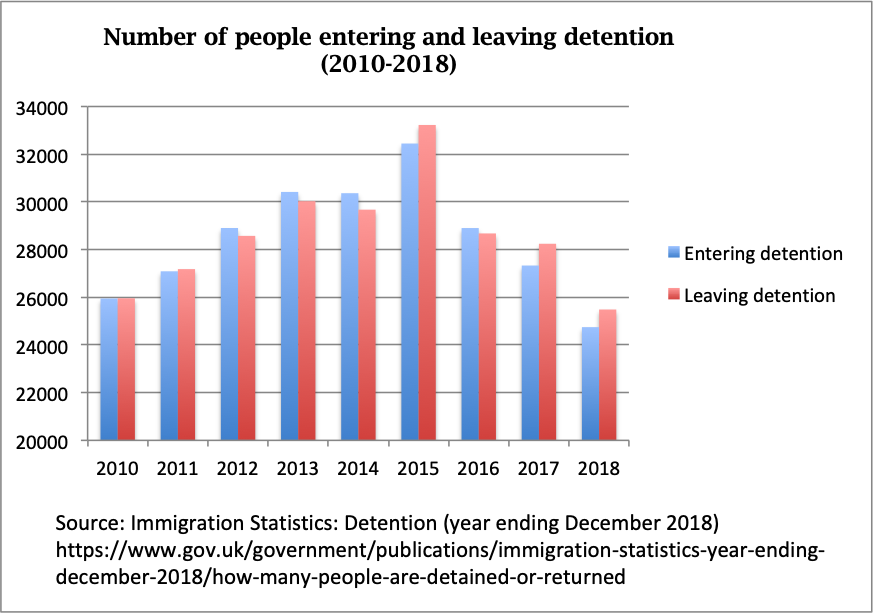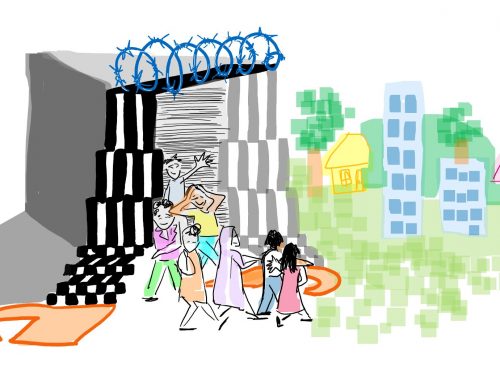Last week, the Home Office published its latest immigration statistics.
The latest detention statistics from the Home Office came out yesterday. Our newest blog takes a look. https://t.co/kAfjtfTGdh #Time4aTimeLimit #EndIndefiniteDetention
— ScotDetaineeVisitors (@SDVisitors) March 1, 2019
As Scottish Detainee Visitors point out, there are some reasons for optimism. True to its promise, the Home Office has made significant progress in decreasing the number of people in detention.
Announcing the closure of Campsfield immigration detention centre in November 2018, the Home Office committed to reducing the immigration detention estate by around 40% compared with 2015.
Today, the Home Office has announced that Campsfield House immigration removal centre will close by May 2019, when the current management contract with Mitie Care and Custody ends.
The closure of the 282 bed centre is part of Home Secretary Sajid Javid’s commitment to cut the number of people detained at any given time and improve the welfare of detainees.
By next summer, the Home Office will aim to reduce the immigration detention estate by almost 40% since 2015.
By the end of December 2018, Campsfield was already empty. There were 1,784 people held under immigration powers in detention centres and prisons, a fall of 30% from December 2017. The number of people leaving detention continues to outpace the number of people being detained.
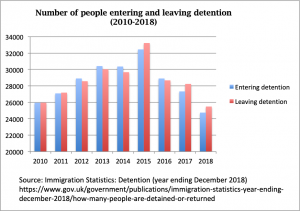
Click here to download this graph to share.
A significant minority of people are held for 28 days or less. On 31 December 2018, 42% people had been detained for 28 days or less, compared with 30% a year earlier (on 31 December 2017). Yet this also means that 58% were detained for longer than 4 weeks. One person had been detained for 774 days – just over 25 months.
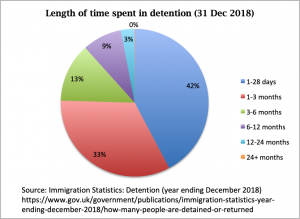
Click here to download this graph to share.
And, as a system for ensuring the removal of people from the UK, immigration detention is failing. The number of people returned to another country from detention has fallen steadily over the past 6 years. Since 2015, fewer than half of all people detained have been removed or deported.
In 2018, only 44% people were returned from detention; the majority were released, their detention having served no purpose.

Click here to download this graph to share.
What’s more, detention gets less effective the longer someone is detained. 48% of people leaving detention within 28 days or less are removed or deported from the UK. For people detained longer than 28 days, this drops to 35% or less. By the time someone has been detained for 2 years or longer, they are very unlikely to be returned.
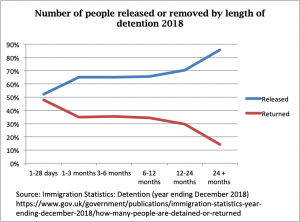
Click here to download this graph to share.
Another trend is an increase in the proportion of people held under immigration powers in prisons. 13% of people were detained in prisons at the beginning of 2018, compared with 21% by the end. From September 2018 to December 2018, the number of people in prison jumped from 301 to 366. This is concerning given that people detained in prisons remain hidden under a ‘cloak of invisibility’, with fewer safeguards and limited access to legal advice.
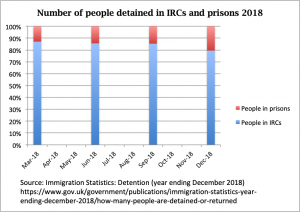
Click here to download this graph to share.
As the Immigration and Social Security Coordination (EU Withdrawal) Bill makes its way through Parliament, it’s crucial that we keep up the pressure on the government to capitalise on the improvements it has already made – and address areas in which it is still failing.


